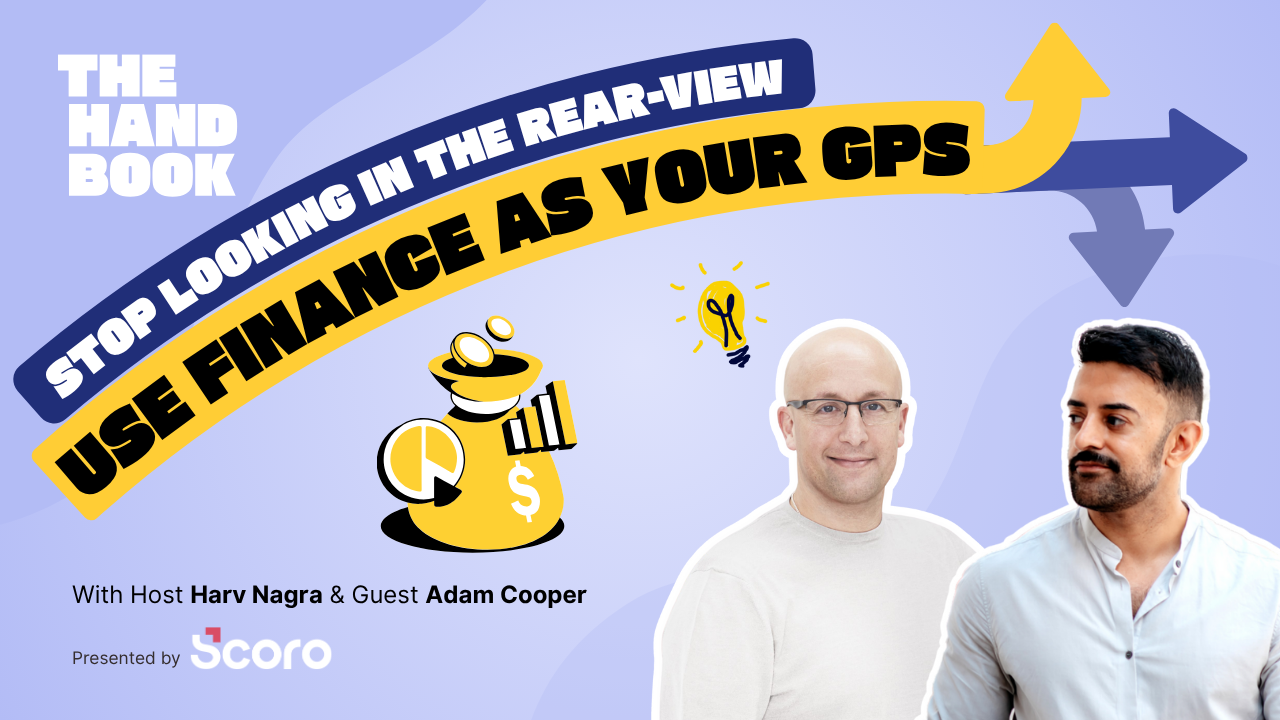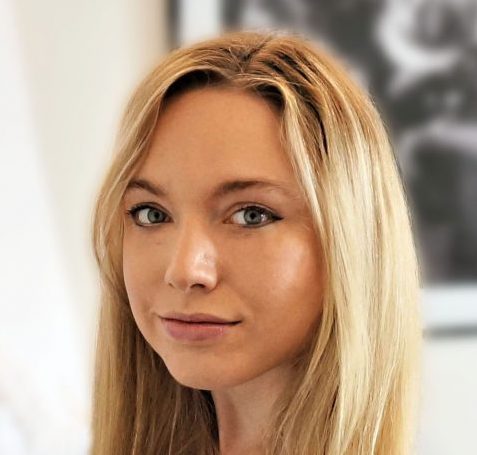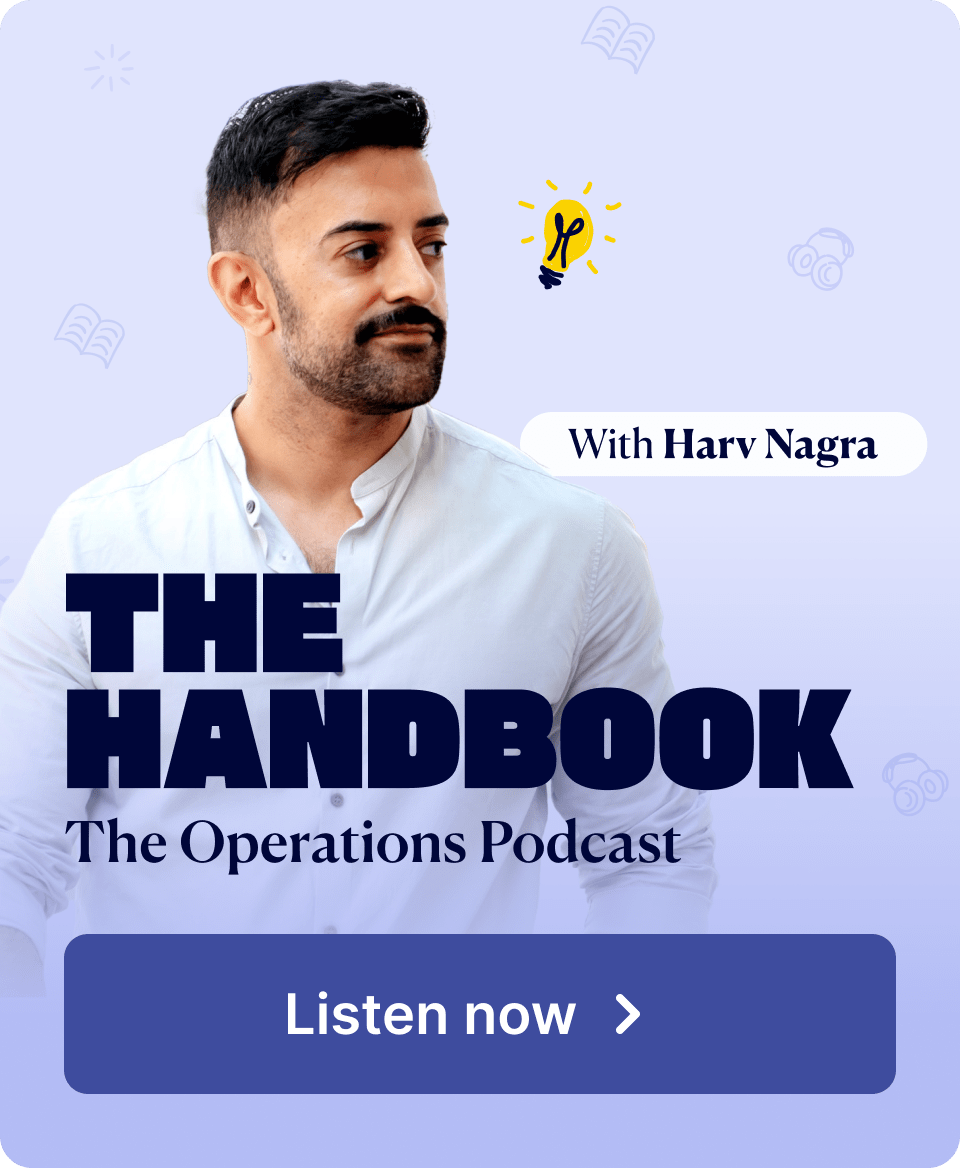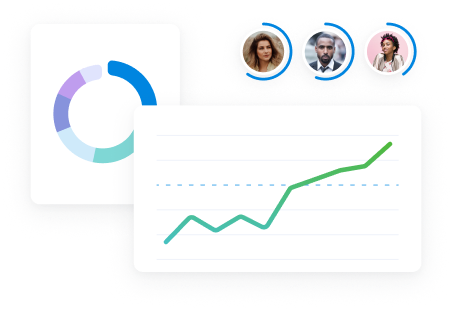To run your agency efficiently, you need to have the right foundation in place. Otherwise, you’ll have to constantly put out fires and solve daily problems—which is frustrating for everyone.
Take a step back and evaluate your big-picture agency operations with tips from our podcast interview with Preston Chandler, Global Practice Lead for Strategic Operations at WPP.
Learn how to get to the root of agency inefficiencies and address them with a simple, four-category framework.
Common pitfalls holding agencies back
Many agencies struggle to scale because they’re unintentionally operating with processes that stunt growth and creativity.
Preston points to four red flags that signal when an agency’s operations need attention:
1. A lack of consistency
Many agencies use different systems when working with different clients.
“They have three major clients and the agency might operate like three independent companies,” Preston says.
So team members have to spend time learning multiple processes, hand-offs and workflows get confusing, and knowledge gets siloed. These inefficiencies can lead to quality issues that impact deliverables and client satisfaction.
2. Decision-making bottlenecks
Excessive layers of hierarchy and approval chains in agencies undermine creativity by diluting original ideas.
When work passes through multiple approvers, those changes can quickly add up and result in far less innovative deliverables—one that don’t align with the initial concept.
“We often fall into this pit of thinking that hierarchy is important, and it’s generally not,” Preston says.
“There’s plenty of research that shows the more approvers you have on something, the less creative it is.“
3. Disjointed teams
Constantly shuffling team members between projects prevents them from building momentum and expertise.
Instead, Preston recommends:
“leaving people on the same client for long enough so that they can become experts and deeply understand the problem—which typically means a year or two. They need to be on there to start really getting that creativity out of them.”
4. Resistance to change
Many agencies operate with outdated processes that haven’t evolved with the times.
“I think maybe the biggest pitfall is that entrenched mindset,” Preston observes. “We haven’t really changed how we operate in the last 30 years.”
For example, many agencies still use the inefficient “telephone game” approach where account managers relay messages between creative teams and clients instead of letting them communicate directly.
These kinds of old habits disempower teams, creating environments where they’re constantly stuck in meetings and chasing approvals. Which makes it harder for them to do their best work.
Further reading: Creative Agency Increases Efficiency 100% with Scoro
The 4 pillars of strategic operations
So, how can you avoid those common traps and create more efficient, creative, and profitable operations?
By stepping back from day-to-day firefighting to evaluate the building blocks of your marketing and creative agency operations.
To transition from tactical to strategic operations, Preston recommends focusing on four key pillars:
- Your agency model
- Your governance
- Your team structure
- Your ways of working
By analyzing and optimizing each of these fundamental areas, you can streamline operations and deliver greater value to your clients and agency.
1. Your agency model: How your agency is structured to serve clients
Your agency model determines how you manage resources, projects, and client relationships at the highest level.
Without a clear approach, you end up with different processes for each client, wasted time figuring out who does what, and confusion over who’s in charge.
“This is particularly important for the larger agencies,” Preston points out. “If you’re a single agency and you’re not necessarily working with other agencies to help out the client, then this answer is pretty much already made for you.“
That said, smaller independent agencies still need to consider how they’re structured internally.
“Even in the single agency model, you can still suffer from things like silos,” Preston explains. “You probably still have creative departments and strategy departments. And if they can’t operate together, then you might as well be completely separate agencies.“
Preston identifies four common agency models to choose from, each with its own advantages and limitations:
1. Lead agency model
One agency takes primary responsibility for the client relationship and brings in specialized agencies to support as needed. This works well when most of the work falls within your core expertise.
“The lead agency can work really well if the work is predominantly with one agency and you have very little need for other agencies,” Preston notes.
But he cautions that “as soon as you start needing other agencies more, this disparity in power doesn’t tend to work very well.“
2. Equal partner model
Multiple agencies work together as equals, each focusing on their unique service.
For example, a media agency handling ad placement might partner with a creative agency producing content to run a social campaign together.
This approach brings in specialized expertise but often creates headaches around who’s in charge of what.
3. Project-by-project teams
Teams are assembled differently for each project based on specific needs.
While highly flexible, this approach prevents team members from building deep client knowledge or connections.
Which can cause them to spend more time getting up to speed than doing their best work.
4. Bespoke team model
A dedicated team is created specifically for one major client, drawing resources from across the agency.
For example, you might create a team just for Ford, with specialists from strategy, creative, and media all working together.
This approach builds deep client understanding and stronger relationships, but comes with higher costs.
“With large clients, it generally makes more sense to have a bespoke model where we create a somewhat standalone agency for them,” Preston explains.
The dedicated focus allows teams to develop specialized knowledge that leads to better work, making it worth the investment for high-value or complex clients.
How to improve
Here are some practical steps to optimize your agency model:
- Identify which agency model best suits your business: Look at your most successful client relationships and analyze what makes them work well—like dedicated teams that stay together, clear client communication channels, or a certain mix of specialized skills
- Audit your biggest inefficiencies: Identify any roadblocks in servicing clients, like handoffs between departments, inconsistent communication, or duplicated efforts across different client teams
- Standardize processes where possible: Create templated workflows and consistent briefing documents that work across projects and clients
2. Governance: Who makes decisions and how
Governance focuses on how decisions are made, who has authority, and how leadership operates day-to-day.
“Governance is about how you’re going to lead,” Preston explains. “Are you going to have one leader for this? Are you going to have multiple leaders? How are you going to empower that leader?”
Many agencies struggle with what Preston calls “figurehead leadership.” This is where someone has the title but lacks true decision-making power.
“Do you have a leader who’s a figurehead who can’t really make any choices, but they’re just a point of contact?” he asks. For example, a client lead who needs to get approval from two departments before responding to simple client requests. This arrangement leads to frustration, delays, and missed opportunities to solve problems quickly, try new ideas, and build stronger client relationships by being responsive.
The “empowered alignment” model
Instead of so-called leaders who have titles but no real authority, Preston advocates for what he calls “empowered alignment” as the ideal governance structure.
“You’re empowering people, but there’s still a central structure that provides alignment,” he explains. “You’re empowered over your sphere or whatever you’re responsible for, but we’re all going in the same direction.”
This approach stands in sharp contrast to either extreme:
- Too much hierarchy where nothing gets done without multiple approvals
- Too much autonomy where there’s no alignment or oversight
To implement this model, Preston recommends thinking of each client relationship as having its own mini-agency structure. That way, you have one clear leader for each client instead of having five different decision-makers.
By shifting to the empowered alignment model, you can dramatically improve the speed and quality of your agency’s output.
How to improve
Follow these practical steps to implement the “empowered alignment” approach in your agency:
- Audit your decision-making process: Gather team leads to map out current approval steps, discuss where decisions get stuck, and identify which steps take the longest
- Remove unnecessary approval layers: Find ways to give greater autonomy to team leaders (like being able to approve budget changes under $10,000 or routine client requests without senior approval)
- Define leadership roles clearly: Outline who’s responsible for what on each project, ensuring every client has one clear leader (not five) and making sure everyone knows who can make which decisions
Top Tip
Use a collaborative tool like Miro to visualize your current decision-making process. After you and your team identify bottlenecks and unnecessary steps, set up an approval flow in Scoro to speed things up. You can set dollar thresholds for what needs approval, decide who approves what, and track what’s waiting for sign-off.
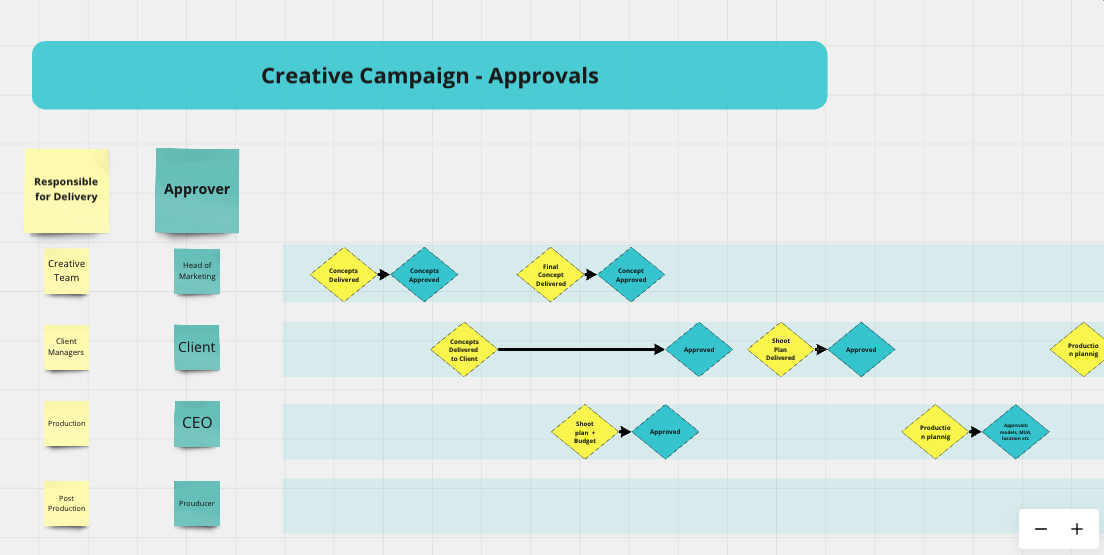
3. Team structure: How your teams are organized
The third pillar focuses on how you put people together to do the work. For any agency operations manager, organizing teams well is perhaps the most visible day-to-day challenge—and a frequent source of inefficiencies.
“Probably the biggest pitfall that I hear from people is that they describe a team like ‘the leadership’ or ‘the team is strategy’ or ‘the team is creative.’ And I’m sorry, but they can’t act like a team. That’s like saying that you have a team full of quarterbacks.“
The power of dedicated cross-functional teams
Preston strongly advocates for dedicated, cross-functional teams that stay together over time.
“Typically, that means you have five to nine people. There’s a lot of human psychology behind that—we really only connect with about seven people at once,” he notes.
He adds that your teams should include all the skills needed to complete the work: “If you’re doing a traditional campaign, you’re going to need strategy, design, copy, and potentially media all on the same team.”
This approach is the opposite of the common agency practice of constantly assembling new project teams.
“If you want to be almost twice as productive, don’t do that,” Preston advises. “Studies show that it takes about three to six months for a team to figure out how to work together. The average length of an agency project? Three to six months. So by the time they figure out how to work with each other, the project is over.“
When Preston set up cross-functional technology teams, the results were dramatic: “Over the course of just a couple months, we had 90% of the people working on a single client project and 10% of the people floating. It became so easy to manage.“
By keeping the same people working together instead of constantly forming new teams, you’ll spend less time on scheduling and handoffs and more time creating great work that clients love.
Who should lead?
For team leadership, Preston challenges the assumption that it needs to be an account or project manager.
“One of my favorite pods ever, the junior creative was the lead. It was fantastic,” he shares. “The team lead is a hat to wear, it’s not a title. It’s much more about looking at who has that aptitude.“
How to improve
Here are practical steps to optimize your team structure:
- Consider shifting to dedicated pods: Form small, cross-functional teams of six to nine people who stay together for at least six months, making sure each pod has all necessary roles (strategy, creative, project management) to fully deliver for the client
- Give team leads decision-making power: Clearly define what they can decide without approval, reduce senior leadership involvement in day-to-day work, and select leads based on skills rather than title or seniority
- Identify inefficiencies: Analyze which employees are spread across too many projects, look at your last three projects to see how many different people were involved, and use Scoro’s “Utilization report” to spot team members who are constantly switching between different clients
4. Ways of working: How your teams execute projects
How your teams carry out day-to-day work can make the difference between an efficient, profitable agency and one that’s constantly struggling to keep up.
According to Preston, many agencies struggle with at least one of these workflow issues:
- Too many meetings eating into productive time
- No standard workflows, forcing teams to reinvent the wheel for each project
- Long approval cycles that delay deliverables and frustrate clients
And without addressing these problems, they’ll only get worse as your agency grows. The more clients you add on, the more these issues will compound. Which can quickly lead to lower margins, burnt-out staff, and unhappy clients.
How to improve
Here are three practical steps to improve your agency’s ways of working based on Preston’s recommendations:
- Audit your billable utilization first: If you’re not sure how much time your team is spending on meetings and non-billable work, analyze your billable utilization in a tool like Scoro to figure out where time is going
- Eliminate one unnecessary meeting: Start small by replacing a weekly status meeting with an async update. Preston recommends tracking the time saved and sharing how your team used that extra hour
- Run quick 15-minute retrospectives: Every two weeks, gather your team to discuss: What worked? What didn’t? What one thing should we improve next?
Centralizing your key systems can also lead to significant efficiency gains.
Take the UK-based agency Ad Esse Consulting. The team’s data was scattered and they wasted time jumping between tools. By switching to Scoro to manage their projects and finances, they were able to achieve significant time savings: three hours per week for directors, and five hours per week for finance.
Build a more strategic agency
By taking a hard look at your core structure and processes, you can transform your agency from reactive to strategic.
To make that shift even easier, use an all-in-one agency management platform like Scoro. Keep all your data on projects, time tracking, budgeting, and client relations in one place to spot inefficiencies and track improvements over time.
Want more strategic agency operations tips? Check out “The Handbook: The Agency Operations Podcast,” where our own Harv Nagra interviews agency experts about proven methods to boost your agency’s efficiency and profitability.


